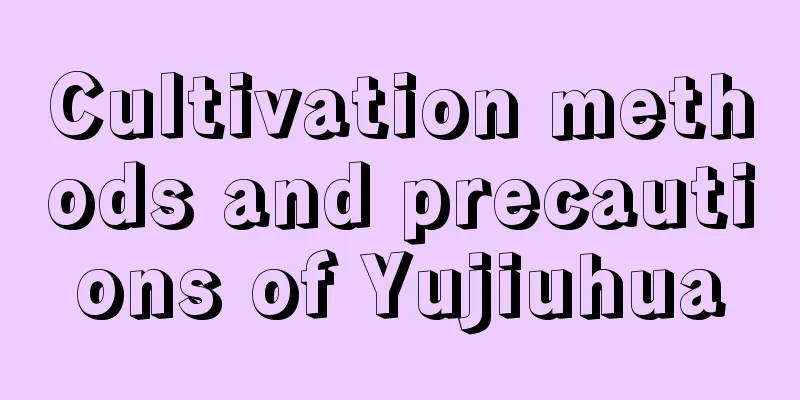Cultivation methods and precautions of Yujiuhua

How to grow raindropsLight and temperatureThe rain lily does not require much light. In spring, autumn and winter, the rain lily can be exposed to direct light. Because the light is not strong, sunburn will not occur. In the hot summer weather, it is best to take shade measures to avoid direct sunlight. If you are keeping it in a potted plant indoors, it is best to choose a brightly lit place such as a living room. The raindrops like a warm growing environment, so the high temperature in summer will be unfavorable for the growth of the raindrops. In winter, when the temperature is below 10℃, the raindrops will stop growing and cannot safely survive the winter due to frost. soilWhen growing raindrops in ponds, you can use soil rich in humus or fertile clay soil. For growing rain lilies in pots, you can choose pond mud rich in humus. A mixed matrix made of rotten leaves, river mud and garden soil is also a good choice. Water and fertilizerThe demand for water and fertilizer of the rain flower is relatively large. Basically, it is required to apply fertilizer thinly and frequently, and pay attention to the balance of various nutrients. When watering, it should be alternately dry and wet, and water thoroughly. Watering and fertilizing can be done at intervals. Reproduction methodThe reproduction of Yujiuhua mainly adopts the method of sowing and division. Sowing is mainly carried out in autumn, and division is generally carried out in early spring. Precautions for the cultivation of YujiuhuaAvoid direct sunlight in summerIt is best not to expose the raindrops to direct sunlight in summer, because in summer, direct sunlight and high temperatures will cause the raindrops to enter a semi-dormant state and grow very slowly. Water requirementsThe rain lily is an aquatic plant that grows in water, requiring the water depth to be between 10cm and 20cm. It has strong adaptability to water quality, and the water is best kept neutral, with a pH between 6.5 and 7.8. Pests and diseasesRaindrops are not easily affected by diseases and insect pests, but when grown in open-air water, they will attract some mosquitoes. |
<<: Snowdrop cultivation methods and precautions
>>: The cultivation methods and precautions of Kochia scoparia
Recommend
Common diseases and pests of Green Yuanbao and their control methods
Common diseases of green yuanbao: powdery mildew ...
The best time to take cuttings of Clematis
1. Best time Clematis can be propagated by cuttin...
Cultivation Techniques of Big Cherry Bonsai
How to make big cherry bonsai 1. Seedling selecti...
Plant these flowers in the summer and you won’t have to turn on the air conditioner at home, saving money!
1 Areca palm The leaves of Areca palm are large a...
How to propagate Phalaenopsis seedlings?
Phalaenopsis is an elegant and beautiful orchid t...
Classification of Evening Mist Flowers
The Love of Yugiri Flower Series The Yugiri flowe...
How to grow potted azalea
one. Matrix: Because the roots of this plant are ...
What does sending gardenias mean?
1. Eternal Love Gardenia has a flower language, w...
When does the peach blossom bloom? Peach blossom pictures
1. Opening hours Peach blossoms usually bloom in ...
Is it okay to add vinegar to jasmine leaves when they turn yellow?
1. When the leaves turn yellow, you can pour vine...
The easiest way to propagate crape myrtle
1. Hardwood cuttings This type of Qinzha uses old...
Sponge gourd sowing method and sowing time
Loofah is widely popular in the market for its ri...
When is the best time to plant pansy seeds?
Pansy seed planting time Pansy is a biennial or p...
In summer, there are plant curtains that are 5 degrees lower than other people’s homes and can also absorb formaldehyde!
Brocade wisteria Maintenance points: 1. Light: Ji...
Can white jade cherries be grown in the south?
Can white jade cherries be grown in the south? Wh...









